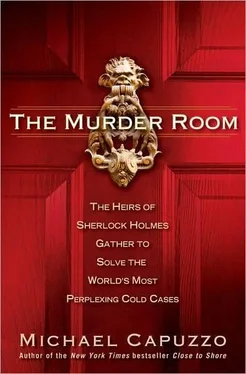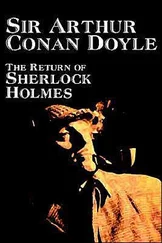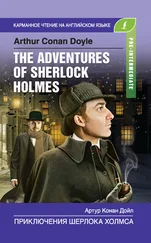Schlesinger was shocked. “Why would a guy who killed his fiancée walk into a room with eighty-two experts in crime and say investigate this crime when it’s already been ruled a suicide by local police? Why would anybody do that?”
Fleisher shrugged. “This is typical behavior of a psychopathic killer-to inject themselves into an investigation, to maintain some kind of control.”
During dessert, Dan Rather said in a voice-over, “Did this man murder his own fiancée? We’ll confront him with the conclusion of some master detectives, and give him a chance to respond.”
The 48 Hours team flew to Florida, and Schlesinger confronted Andronico in a room of his doctor’s office with the camera rolling. Standing against a wall in a blue suit and yellow tie, Andronico said no one knew or loved Zoia “as much as I did,” and he was suffering the greatest loss.
Schlesinger said that the Vidocq Society investigators believed he was a psychopathic killer; what did he say to that? Andronico calmly stuck to his alibi and said, “I have nothing to worry about.”
“Did you kill her?” Schlesinger said.
Calmly, “No, I did not. No, I did not.”
In February, Fleisher had sent a ninety-page letter to the Ocean County prosecutor summarizing the findings of the Vidocq Society investigation and urging him to reexamine Assur’s death.
“We believe that there are enough inconsistencies regarding her death to cause a reasonable person to pause before declaring it a suicide, and that the case, therefore, should be revisited,” Fleisher wrote in the Vidocq Society Journal.
The prosecutor never answered back.
By January 1993, almost a year after Fleisher’s letter, nobody from the police or prosecutor or medical examiner’s offices had shown any interest in looking at the Vidocq polygraph charts, reviewing the conflicting statements of alibi witnesses, watching the videotapes of Andronico and his father, or “for that matter, even listening to what we have to say,” Fleisher said. The New Jersey case was closed: Assur had committed suicide. Andronico had never been considered a suspect. Therefore, Fleisher said, “The Vidocq Society is placing this case in a closed status.”
He added, “There is much truth to the old saw ‘You can lead a horse to water, but you can’t make him drink.’ ”
CHAPTER 29. THE CASE OF THE SHOELESS CORPSE
In old Philadelphia, where horse-drawn hansoms rattled over cobblestones, stood an old brick tavern open for business on and off for two centuries, with the sign of the loaves and roasts creaking in the wind. The eighteenth-century edifice once commanded the New World harbor as “the most genteel tavern in North America,” John Adams said. Washington, Jefferson, Franklin, Madison, and Adams dined and drank their way through the drafting of the Declaration of Independence and the U.S. Constitution there. Now it was an elegant neo-colonial restaurant and tourist watering hole that seemed lost in time. The mass of visitors walked by heading to Independence Hall as if the tavern at Second and Walnut was not visible.
During the great celebrations of independence two centuries ago, full-length portraits of Lafayette and General Washington were painted in the tavern windows, backlit by candlelight. On Thursday morning, April 30, 1992, the windows were marbled by more disturbing images. The corpse of a lovely young woman, blond and petite, filled the projection screen at the north end of the hall. Deborah Lynn Wilson, twenty years old, was lying on her back at the bottom of a stairwell on the campus of Drexel University in Philadelphia. The senior mathematics major, a former model, had been severely beaten and strangled to death.
Seven years later, no one had been arrested for the murder, and Vidocq Society Members had assembled from London, Paris, New York, and Virginia to examine their ninth murder case, the Death of Deborah Wilson.
Philadelphia police sergeant Robert Snyder, a homicide detective in his forties with sandy hair and intense blue eyes, took the podium. The highly respected detective had worked the case for much of seven years; Snyder worked headline cases. But this one stumped him. “You always feel bad about the cases you don’t solve,” he told the society. “Especially the ones involving the young, the innocent, and the aged. This is one of the innocents.”
Walter, putting down his coffee, snapped to attention and looked up. He saw at once why no arrests had been made after seven years, and why police detectives and a private eye hired by the family were still confused. The murder scene contained no signs of the common motivations cops were trained to observe-no obvious clues implicating money or sex. No signs of robbery. Deborah’s body was covered by the down-quilted gray overcoat she had donned that chilly morning of November 30, 1984, the week after Thanksgiving. Her winter gloves were still stuffed in the pockets of the overcoat. Her wristwatch was still on her wrist. Nor was there a recognizable sexual assault. Deborah Wilson died still fully clothed, in jeans and a blue, long-sleeve pullover blouse, except for her feet, which were bare. Only her white Reebok sneakers and socks were missing.
There was no rational reason Deborah Wilson had to die. The police would make no progress until they broke out of investigative routine and accepted the fact that the crime was beyond normal human comprehension and traditional standards of morality-or amorality, in fact.
This was no ordinary murder. It was a gruesome act of depravity. It was a New Age crime, a “Me Generation” murder. It wasn’t one of those pre-1960s killings that cops now saw in a bizarre haze of near-nostalgia: A jealous man shoots his two-timing wife, a law partner gets snuffed for half the firm. Those old-time killers were almost understandable to average folks. The cops always knew where to look: the husband, the law partner, someone the dead man knew well.
But this kind of murder, a lovely, wholesome young woman killed for no reason at all-this was crazy time, cops figured. But it wasn’t crazy; it was sane, methodical, cold, well-planned. Just another middle-class American exploiting the bounty of unprecedented affluence and freedom, steady employment, his own house and car, ample leisure time, a king’s library of depraved instructional media images, a large supply of young, tolerant, fun-seeking acquaintances-all the resources, in other words, that only aristocrats like the Marquis de Sade once possessed to sample and deeply explore their hungers. Just an everyday late-twentieth-century American monster.
De Tocqueville warned of the dumbing-down of America, but he never imagined this. The elite forms of evil had gone mass-market.
Still looking up at the screen, Walter thought to himself, Young man, I know what you’re up to. One ought not to do such things. You can’t hide from me.
As Snyder began to describe the case, Walter sensed an air of excitement in the eighteenth-century hall. He detected a new seriousness, an intense focus from his peers. Fleisher had said the eyes of the world were on them now. Adding to the anticipation, another prominent journalist guest, Lewis Beale, a writer on assignment for the Los Angeles Times, was sitting at Fleisher’s table, scribbling notes. Beale specialized in cop stories. He had interviewed the L.A. cops who advised Hill Street Blues director Barry Levinson about his TV series Homicide and Sidney Lumet, director of Serpico. When he described the Vidocq Society, it sounded like a ’50s film noir band of forensic brothers “who pool their experience and intellect attempting to solve the unsolvable.”
Fleisher, Walter, and Bender were astonished. The Vidocq Society had become the media flavor of the moment. A noted film agent who sold the classic mob pic Goodfellas wanted to represent them. A month earlier, the Sunday Philadelphia Inquirer had touted the colorful club as avengers of “unsolvable crimes.” A week after that, the Sunday Miami Herald published the same story under the headline, THIS CLUB’S WHODUNITS ARE REAL. Suddenly there was pressure to solve crimes, not just discuss them. The Sunday New York Times, the previous spring, had captured the society’s fanciful Sherlock Holmes style with its dispatch, FIRST THEY DINE, THEN TALK TURNS TO MURDER.
Читать дальше












